
Two weeks ago I made my first visit to one of California’s Channel Islands, Santa Catalina Island. For those that don’t know, Southern California is home to an archipelago of small, rugged islands off its coast. My 2012 New Year’s resolution was to visit one or more of the Channel Islands. Having failed to realize this wish by December of that year, I instead resolved to learn to tie a bow tie after being berated (jokingly, I think) for not knowing how to do so despite operating a gentlemen’s shop. For the record, I accomplished this last-minute resolution and wore a bow tie a few nights later New Year’s Eve that I tied all by myself. Anyway, since transportation via Catalina Express is free on one’s birthday, I decided to have another go at island life.

Accompanying me in her debut appearance was Una. In order to get as much out of our adventure as possible, we departed at some pre-dawn hour. After a hastily-devoured meal from McDonald’s (which, though simple and clarified three times, managed nonetheless to be both screwed up and roof-of-the-mouth blisteringly hot) we raced down the docks and lept aboard the boat with about two minutes to spare.
Despite the relatively early hour, I could scarcely contain my excitement at once again being back on the sea after so long on land. As we passed freighters in the Harbor from the other side of the ocean, I thought what an adventure it must be to journey, even as a mere cabin boy, between San Pedro Bay and Japan or China by sea — singing sea shanties for the enjoyment of my fellow seamen. As the biting wind struck my face I reminisced about hitting the seas to go scuba diving and remembered that one of the main draws of California upon me was its maritime nature. Before long the site of Catalina (almost always visible from the mainland as a dark silhouette) came into focus like something out of a dream.
Santa Catalina Island (often referred to as either Catalina Island or just Catalina) is about 35 km long and 13 km wide at its greatest width. It’s located 35 km from the coast. The highest point is the 639-meter tall Mount Orizaba. The Channel Islands, in descending order of size, Santa Cruz, Santa Rosa, Santa Catalina, San Clemente, San Nicolas, San Miguel, Anacapa, and Santa Barbara. Like San Clemente Island, Santa Catalina Island is just as much a part of Los Angeles County as the communities of the mainland (even though the two islands are often given the Alaska and Hawaii treatment on maps).
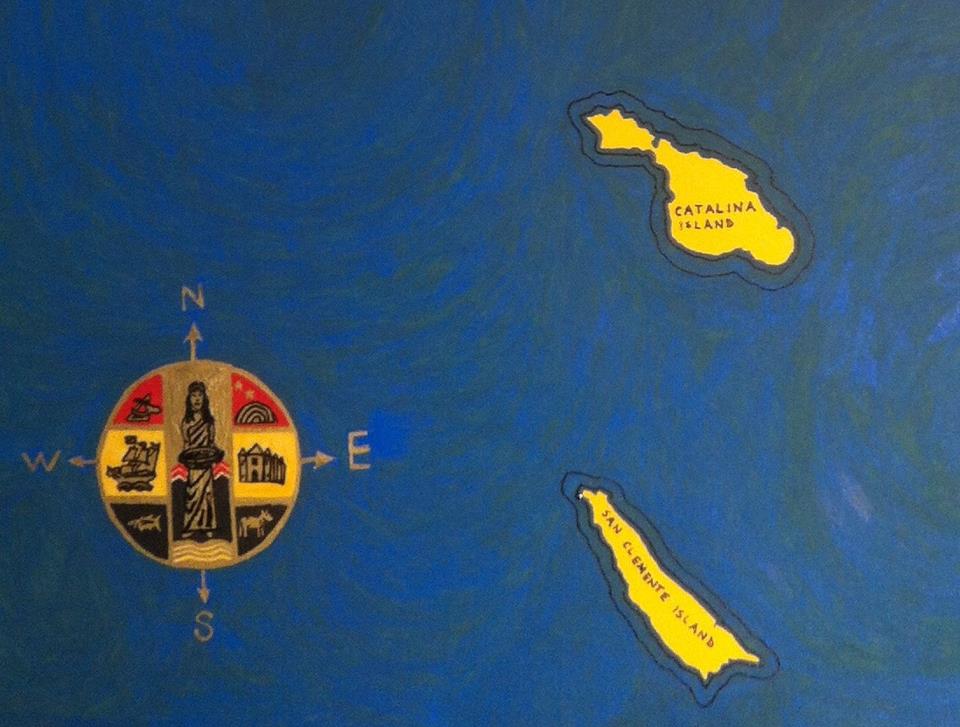
THE RIME OF THE ANCIENT ISLAND
Several of California’s Channel Islands – Santa Cruz, Santa Rosa, and San Miguel – were historically home to the Chumash, whose ancestors settled them at least 13,000 years ago. Whether San Clemente, San Nicolas, and Santa Catalina islands’ first human residents were Chumash or some other people is not known. What is known, however, is that there is archaeological evidence of human habitation from roughly 7,000 BCE. Ancient middens suggest that around 2000 BCE there were roughly 2,500 people on Santa Catalina.
The Tongva arrived in the region from their homeland in the Sonoran Desert in roughly 1500 BCE. Evidence of battles discovered by archaeologists suggests that, perhaps, the original inhabitants were wiped out or absorbed into the conquering Tongva. Over time, the Tongva on Santa Catalina emerged as a distinct band who referred to themselves as Pimuvit. The Tongva band called the island Pimu’gna (“Place of the Pimu”). Their largest settlements were near the present-day settlements at Avalon, Shark Harbor, and Emerald Bay. The Tongva, having come from the desert, likely learned deep seafaring from the Chumash, who along with the Mapuche in Chile, are one of the only known indigenous Americans to known to have masterd that skill. The Pimuvit traded soapstone from the island with other nations along the California coast and possibly with Polynesians.
SPANISH ERA
The first European explorer, Juan Rodríguez Cabrillo, arrived on 7 October 1542 and, naming it San Salvador, claimed it for Spain. In 1602, another Spanish explorer, Sebastián Vizcaíno, again “discovered” the island, this time naming it Santa Catalina in recognition of the Eve of Saint Catherine’s Day (24 November), on which he arrived. The Spanish lacked the ability to prevent other nations from using the island and for centuries Aleut, American and Russian otter hunters, luckless gold prospectors, and smugglers all used the islands for their own purposes, decimating the Pimuvit with disease and murder.
MEXICAN ERA
Mexico gained independence from Spain in 1821 and the islands changed hands once again. The last of the Pimuvit were gone by the 1830s – mostly victims of disease and migration to the mainland in search of work. Governor Pío Pico granted the island to Thomas M. Robbins in 1846 as Rancho Santa Catalina.
AMERICAN ERA – FOOL’S GOLDRUSH
In 1850, Robbins sold the island to José María Covarrubias who sold it to Albert Packard in 1853 who in turn sold it to James Lick. Despite the fact that no gold was ever found on the island, otter hunters began telling tales of gold mines and buried treasure. Boomtowns sprang up and in 1863 and 70 miners were then mining various claims. One character, Stephen Bouchette, claimed to have struck a rich vein and after securing backing to mine for gold, set sail with his wife and all of their belongings and was never heard from again. In 1864, the US ordered everyone off the island and a small garrison of troops was stationed on the isthmus’s west end. The barracks, still there, are currently home to the Isthmus Yacht Club and are the oldest structure on the island.
EARLY AVALON
After the end of the Civil War, a few ranchers began to move to the island. Real estate developer George Shatto was the first to capitalize on the island’s potential as a tourist destination. After buying the island from the Lick estate, Shatto built the island’s first hotel, Hotel Metropole, and a pier. His sister-in-law, Etta Whitney, came up with the name Avalon, taken from Alfred, Lord Tennyson‘s poem “Idylls of the King.” Shatto soon defaulted on his loan and ownership returned to the Lick estate.
THE SANTA CATALINA ISLAND COMPANY
The Santa Catalina Island Company was established by the sons of Phineas Banning in 1891 with the intention of developing the island as a resort. In addition to promoting Avalon, the Banning brothers developed inland roads for stagecoach tours and to access hunting lodges. They also built homes for themselves at Descanso Canyon and in what’s now Two Harbors. Their efforts were majorly set back when a fire destroyed most of Avalon on 29 November 1915. In 1919 the brothers were forced to sell shares of their company.
WRIGLEY ERA AND AFTER
After visiting the island with his family, William Wrigley, Jr. purchased most of the island’s shares and thus gained controlling interest in the Santa Catalina Island Company. The Tuna Club of Avalon was built in 1916. To drum up publicity, Wrigley’s Chicago Cubs began using the island for spring training in 1921 and stayed at the Hotel St. Catherine in Descanso Bay. The Catalina Island Yacht Club, established in 1893, built a new Yacht Club in 1924 (the former was destroyed in the fire). Wrigley established the Wrigley Ocean Marathon in 1927. He built the Catalina Casino in 1929. He died in 1932 and control of the company passed to his son, Philip, who continued his father’s work.
The 1920s and ‘30s are widely considered to have been the island’s heyday with movie stars like Clark Gable frequently making high-profile visits and famous western author Zane Grey making his home there (which is now the phone-and-television-less Zane Grey Pueblo Hotel).
During World War II the island was used by the military and closed to tourists. San Clemente Island, to the south, is still owned by the military and off-limits to visitors. The US Maritime Service, Coast Guard, Office of Strategic Services, Army Signal Corp, and Navy all established a presence at various locations throughout the island.
In 1972, 26 Brown Berets planted a Mexican flag on Catalina, claiming that the Guadalupe Hidalgo Treaty between Mexico and the US didn’t cover the Channel Islands. Following 24 days of camping near Chimes Tower the activists returned to the mainland. In 1975, 42,135 acres of the island were deeded not to Mexico but to the Catalina Island Conservancy, established the same year as the Brown Berets’ action.
CATALINA TODAY
As of 2010, Catalina was home to 4,096 people – with 90% living in the only incorporated community, Avalon. Unincorporated Two Harbors is the next largest settlement and was then home to only about 298 people. The population of the island is about 56% Latino of any race, 41% white Anglo, and about 2% Asian/Pacific Islander.
FLORA AND FAUNA
About 400 species of native plants grow on the island. Six varieties are endemic. There are five native land mammals: a subspecies of California Ground Squirrel, the Santa Catalina Island Harvest Mouse, the Santa Catalina Island Deer Mouse, the Ornate Shrew, and the aforementioned Island Fox.
The endangered Island Fox was almost wiped out. In 1999, there remained only about 100. A recovery program increased their numbers and I saw and snapped a picture of one of the new roughly 400.
In addition to the fox, the most recognizable fauna icon of the island is the American Bison. Fourteen bison were brought to the island in 1924 for the film, The Vanishing American. Rather than euthanize or return the bison, the filmmakers simply left them be and today there are about 150 which have — along with other non-natives including Blackbuck, Bullfrogs, feral cats, Mule Deer, rats, and Starlings — taxed the ecosystem. The non-native cattle, goats, pigs, and sheep were also destructive but are no longer present on the island. The waters around the island are home to California Sheephead, Garibaldi, Great White sharks, Leopard sharks, White Seabass, Yellowtail, Bat Rays, Giant Sea Bass, California Sea lions, and Harbor Seals.
GETTING THERE
Catalina is regularly serviced by public transportation. Passenger ferries depart from Dana Point, Long Beach, Marina del Rey, Newport Beach, and San Pedro. Helicopters also connect Long Beach and San Pedro to the island. On the day of our visit, there was a Carnival Cruise ship broken down (I kid) off the coast.
For those with access to a private plane, the island is also home to the Catalina Airport aka Airport-in-the-Sky, built in 1946 on top of a mountain 488 meters above sea level.
GETTING AROUND
Most residents of Catalina own gas-powered golf carts and many tourists rent them as well. When we explored Avalon in the morning, it took me a bit to get used to what sounded and smelled like 2,000 lawnmowers and leaf blowers being operated at once. There are also bike riders and rentals as well as tour busses and a trolley. There are, contrary to what I’d heard, some proper cars and trucks. Most of the ones that I saw were Minis (originals, not BMWs) and Japanese mini trucks.
STUFF TO DO
With almost one million annual visitors annually dwarfing the local population by hundreds of times, it should come as no surprise that tourism is central to the island’s economy. There are all sorts of appropriately touristy activities available including glass bottom boats, scuba diving, snorkeling, para-sailing, and tours seem to be especially popular. Despite Avalon’s most iconic architecture being Catalina Casino, legal gambling is not. To quote Pee-Wee Herman, “Some things they don’t teach you in school; some things you just have to learn for yourself.” We opted for an inland bus tour, the tickets for which were sold to us by a seemingly authentic Sea Hag straight out of Popeye. We also, not very tourist-like, visited the local library.
Swimming in the ocean near Avalon’s beaches is also popular although the fact that the Natural Resources Defense Council lists Avalon as one of the ten most chronically polluted beaches in the nation due to mainly to its antiquated sewer system convinced me to pursue liquid refreshment elsewhere – namely, in a bar.
EATS AND DRINKS
Nearly all of the restaurants on Catalina Island are in Avalon. Refreshingly, none are part of an international chain. We ate a hearty elevenses at Pancake Cottage, a light lunch Avalon Seafood (aka Fish and Chips), and dinner at Lobster Trap. In between, we enjoyed ice cream from Big Olaf’s Ice Cream, and beer at one of the island’s only proper bars, the Marlin Club.
Restaurants we didn’t manage to check out include Antonio’s Pizzeria & The Catalina Cabaret, Avalon Grille, Avalon’s Plaza Cafe, Barbecue House, Bluewater Grill, Buffalo Nickel Restuarant, Cafe Metropole, Casino Dock Cafe, Catalina Cantina, CC Beau Deli, CC Gallagher, Channel House Restaurant, Chef D’Arcy’s Soul Food, Coney Island West, Coyote Joe’s Bar & Restaurant, Debbie’s Island Deli, Descanso Beach Club, Dessert Island, Dockside Deli, Eli’s Island Deli, El Galleon, Eric’s on the Pier, Island Sushi, Joe’s Place, Katie’s Kitchen, Landing Bar & Grill, Laua Larry’s, Lori’s Good Stuff, M Restaurant, Mi Casita Mexican Restaurant, Mr. Ning’s Chinese Garden, Original Anotio’s Deli, Original Jack’s Country Kitchen, Pete’s Plaza Cafe, Pic Nic Fry, Ristorante Villa Portofino, Sally’s Waffle Shop, Sandtrap Restaurant and Bar, Steve’s Steakhouse, Three Palms Avalon Arcade, and Topless Tacos.
Outside of Avalon, there are few options. We squeezed in more beer at DC-3 Gifts and Grill (aka Runway Cafe) which is located at the airport. In Two Harbors there’s Doug’s Harbor Reef Restaurant. Presumably, guests can get breakfast at least at the island’s bed and breakfasts.
AVALON IN FILM
Catalina has long been the subject of documentaries. A sampling of the earliest includes Santa Catalina, Magic Isle of the Pacific (1911), Santa Catalina Islands, and The Capture of a Sea Elephant and Hunting Wild Game in the South Pacific Islands (both 1914).
The island has also been a filming location for episodes of several TV series including Airwolf, The Aquanauts, The Bachelor, Bachelor Pad, The Bold and the Beautiful, Den store fisketuren, Falling in Love with the Girl Next Door, The Girls Next Door, Hell’s Kitchen, Home from Home, Laguna Beach: The Real Orange County, Mannix, Route 66, Sea Hunt, Twentysixmiles, and Voyage to the Bottom of the Sea.
Its list of features and short films set and/or filmed there includes but is not limited to Biblical stories, prehistoric fantasies, pirate movies, swashbucklers, and Naval epics. Many films shot in Catalina were done so in the silent era, including Action (1921), American Pluck (1925), The Beach Combers (1912), Ben-Hur: A Tale of the Christ (1925), The Black Pirate (1926), Conquering the Woman (1922), Ebb Tide(1922), Feet of Clay (1924), Half a Man (1925), His Jonah Day (1920), The Isle of Lost Ships (1923), The Kid Brother (1927), The King of Kings (1927), Loot (1919), Male and Female (1919), Man’s Genesis(1912), Miss Adventure (1919), No Man’s Land (1918), Old Ironsides (1926), Peter Pan (1924), A Prizma Color Visit to Catalina (1919), The Professor’s Wooing (1912), Rivals (1912), A Romance at Catalina(1912), Roughest Africa (1923), The Sea Beast (1926), The Sea Hawk (1924), The Sea Maiden (1913),The Sea Nymphs (1914), The Shepherd of the Hills (1919), Sirens of the Sea (1917), Terror Island(1920), The Treasure of the Sea (1918), the aforementioned The Vanishing American (1925), The Woman (1915), The Valley of the Moon (1914), and The Yankee Girl (1915).
Catalina’s also been a filming location and/or setting for many talkies. Consider the following:
Affairs in Order (2008), All Ashore (1953), All is Lost (2013), Apollo 13 (1995), Aquanoids (2003), Atlantis, the Lost Continent (1961), Attack of the Crab Monsters (1957), Battle at Bloody Beach (1961), Beachcomber (2009), Billy’s Hollywood Screen Kiss (1998), Bird of Paradise (1932), Blockade (1938), The Blue Men (1990), Born to Dance (1936), The Buccaneer (1938), Captain Calamity (1936), Catalina Caper (1967), Chinatown (1974),
The Circuit III: Final Flight (2006), Cruise into Terror (1978), The Cruise of the Jasper B (1926), Dancing Dynamite (1931), Dangerous Character (1962), Dawn of the Dead (2004), Dead in the Head(2010), The Divine Lady (1929), The Divorcee (1930), El capitan Tormenta (1936), Elmer, the Great(1933), Fast Life (1932), The First to Go (1997), The Flaming Signal (1933), The Glass Bottom Boat(1966), Guadalcanal Diary (1943), Harpoon (1948), Hero’s Island (1962),
Hong Kong Nights (1935), The Hurricane (1937), I Live My Life (1935), The In-Laws (1979), The Incredible Petrified World (1957), Into the Wild (2007), Island of Lost Souls (1932), Island Prey (2005), Jack the Giant Killer (1962), Jaws (1975), Journey of Echoes (2011), King of the Jungle (1933), Life as a House (2001), Lost Focus (2004), Love thy Neighbor (1940), The Man with Bogart’s Face (1980), Men Without Women (1930), Mermaids of Tiburon (1962),
Monster from the Ocean Floor (1954), The Monster That Challenged the World (1957), Murder on a Honeymoon (1935), Mutiny on the Bounty (1935), New Moon (1940), Oh Kay! (1928), P.J. (1968), Pirate Party on Catalina Isle (1935), Pirates of the High Seas (1950), Platinum High School (1960), Port of Hate (1939), Rain (1932), Reap the Wild Wind (1942), Rebecca of Sunnybrook Farm (1938), Red Hair(1928), Ruthless (1948),
Sadie Thompson (1928), Sand Sharks (2011), Sands of Iwo Jima (1949), The Sea God (1930), The Sea Hound (1947), Seas Beneath (1931), The Shepherd of the Hills (1928), Sherlock: Undercover Dog(1994), The Sin Ship (1931), Sixteen Fathoms Deep (1934), The Son of Kong (1933), Song of the Islands (1942), Strange Interlude (1932), Submarine D-1 (1937), Suicide Kings (1997), Summer Children (1965), The Tenderfoot (1965), Tormented (1960), two short films called Catalina (both 2007), Typhoon (1940), Wake of the Red Witch (1948), Waterworld (1995), We’re Not Dressing (1934), When Willie Comes Marching Home (1950), and You Said a Mouthful (1932)
In 1981, actress Natalie Wood drowned in the waters near Two Harbors under fishy circumstances, where she and her husband, actor Robert Wagner, were vacationing aboard their yacht with fellow actor Christopher Walken. In 2011 the case was reopened due to statements made by the yacht’s captain, Dennis Davern. When we visited, there was some sort of related exhibit regarding the events at the small Catalina Island Museum.
Catalina is also the birthplace of actor/producer/director Gregory Harrison (he directed episodes of Trapper John, MD and Touched by an Angel), visual effects guy Jack Cosgrove (Gone with the Wind), and Ernie Reed (camera and electrical department on City Heat).
SOUNDS OF AVALON
Not a lot of (or any that I’m aware of) widely-recognized music performers or bands have emerged from the island’s small population but it has hosted a couple of big names and events. Every year there’s the Catalina Island Jazztrax Festival. It was also the recording site of John Tesh: The Avalon Concert (1997).
Additionally, it’s been mentioned or referenced in a couple of songs including Harry Carroll and Harold Atteridge‘s “By the Beautiful Sea” (1914), Al Jolson and Vincent Rose‘s “Avalon” (1920), Nacio Herb Brown and Grant Clarke‘s “Avalon Town” (1928), Carrie Jacobs-Bond‘s “California” (1929), Cliff Friend and Con Conrad‘s “California” (1930), Harold Spina‘s “Santa Catalina” (1946), Gorden Vanderburg‘s “Catalina Honeymoon” (1953), The Four Preps’ “26 Miles” (1958), The Descendents’ “Catalina” (1982), Modern Skirts’ “Pasadena” (2005), and The Blue Jean Committee‘s “Catalina Breeze.”
EPILOGUE
We caught the last ferry home, along with many more people than were onboard our boat on the way to Catalina. Whereas our morning journey had been amazingly quiet, the trip home was memorable for the shrill screams of energetic children. Outside the boat’s window, I was treated to a stunning sunset that I gave up on trying to capture with a camera and then the lovely site of downtown Long Beach.
…one down, seven to go!
Support Eric Brightwell on Patreon


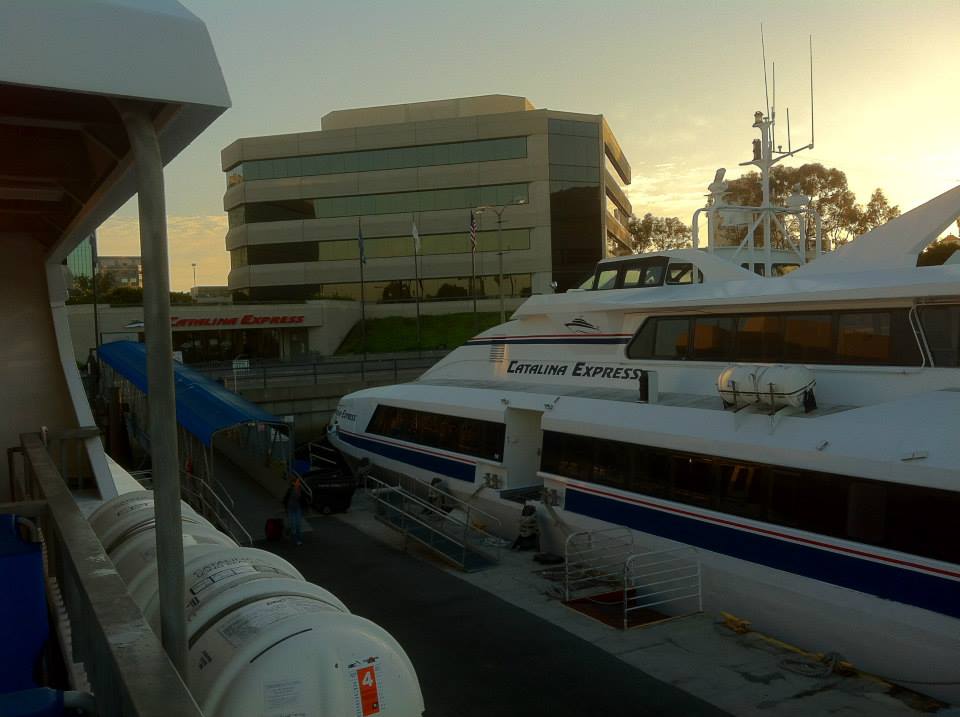

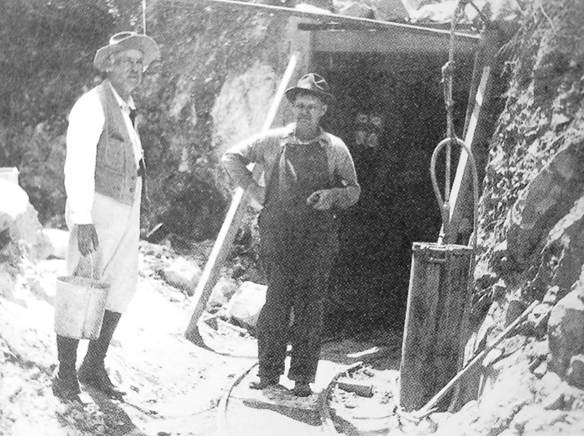
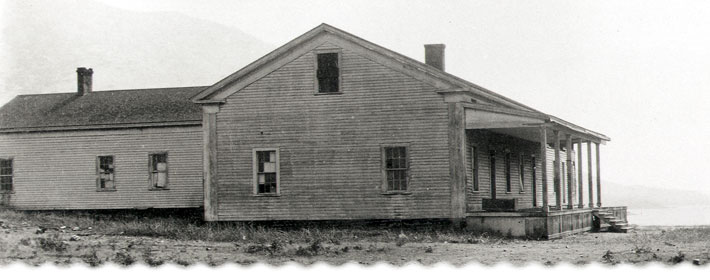

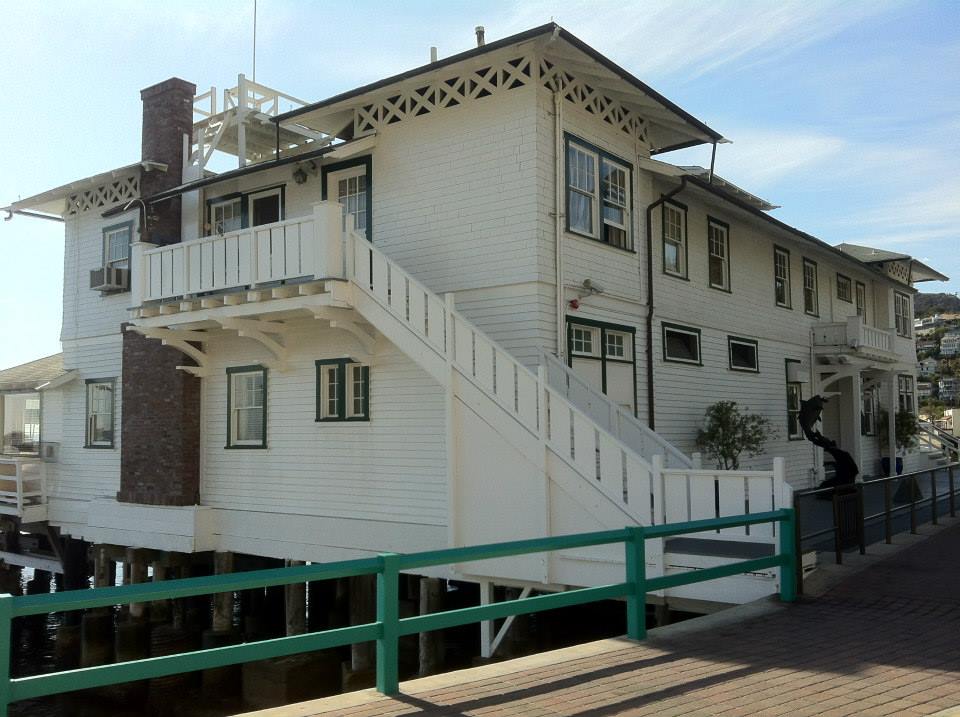

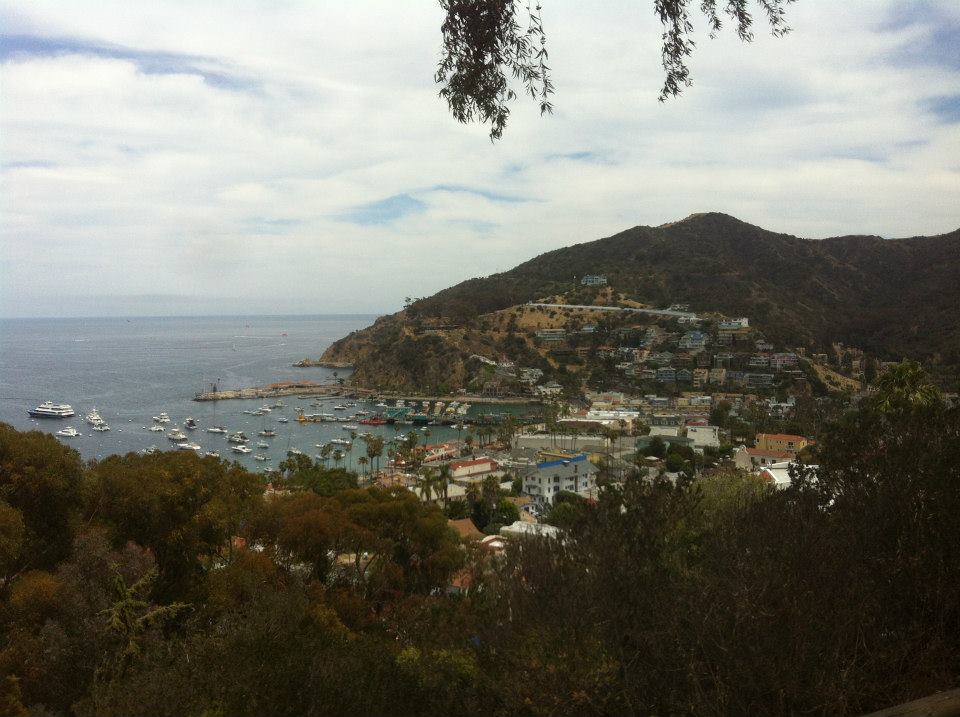

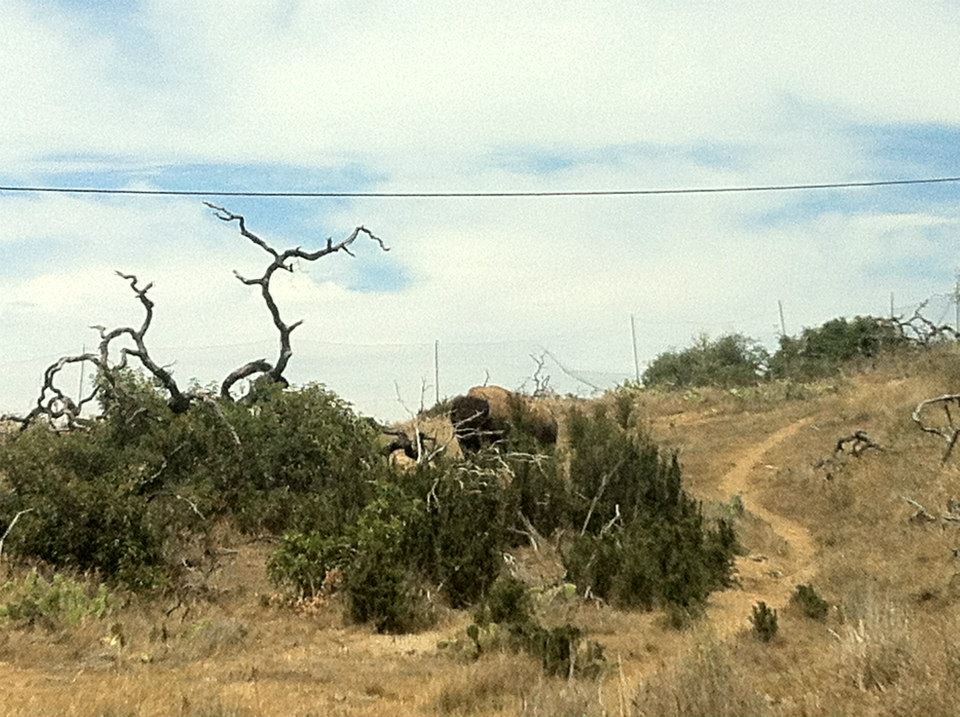
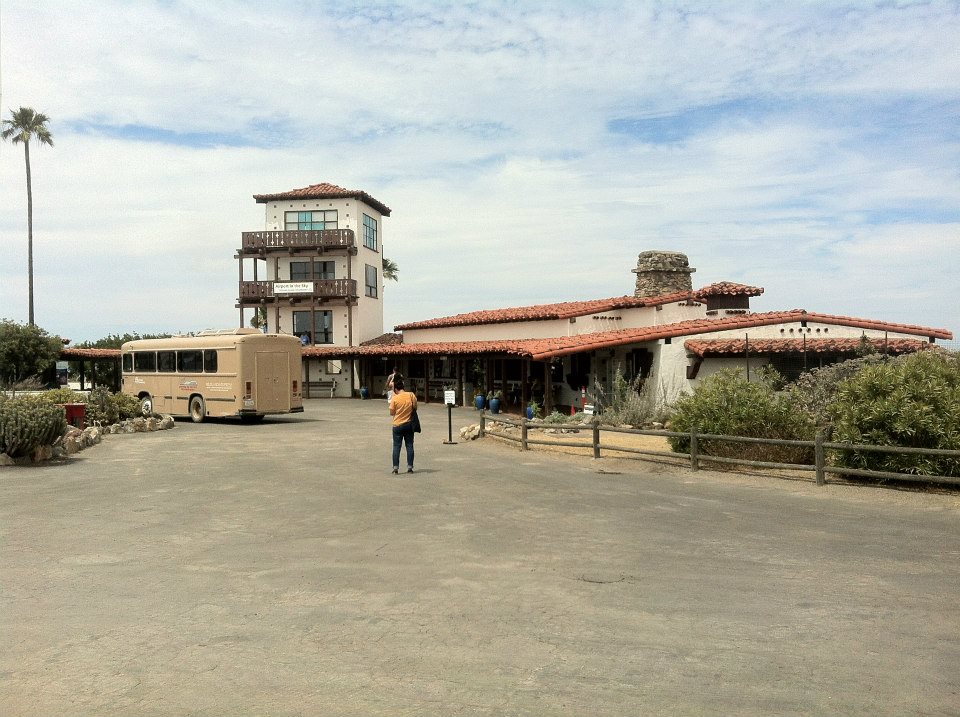
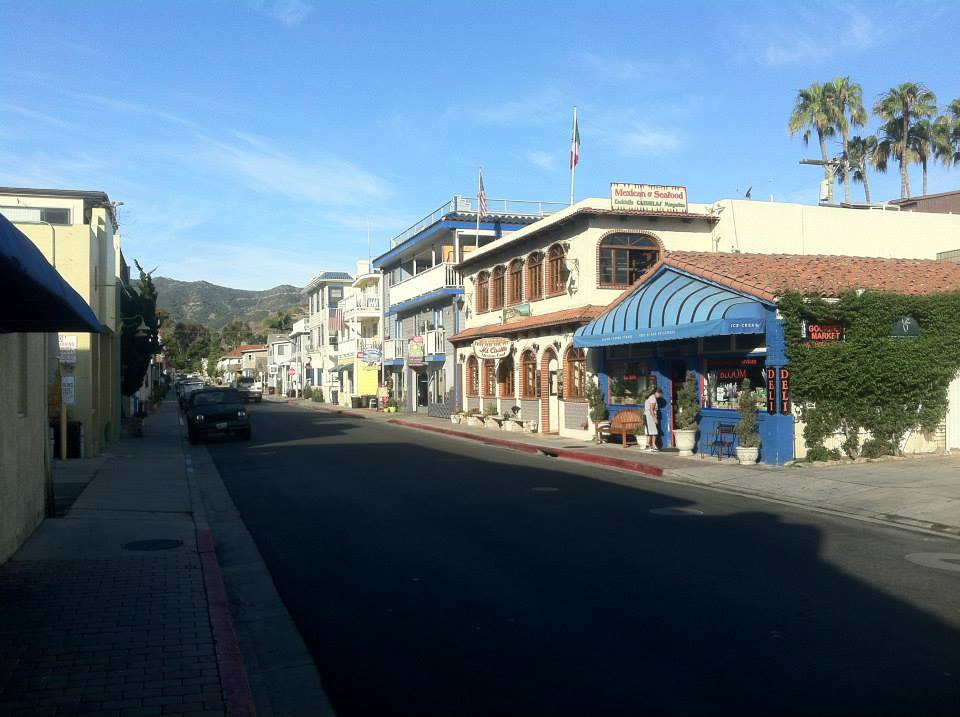
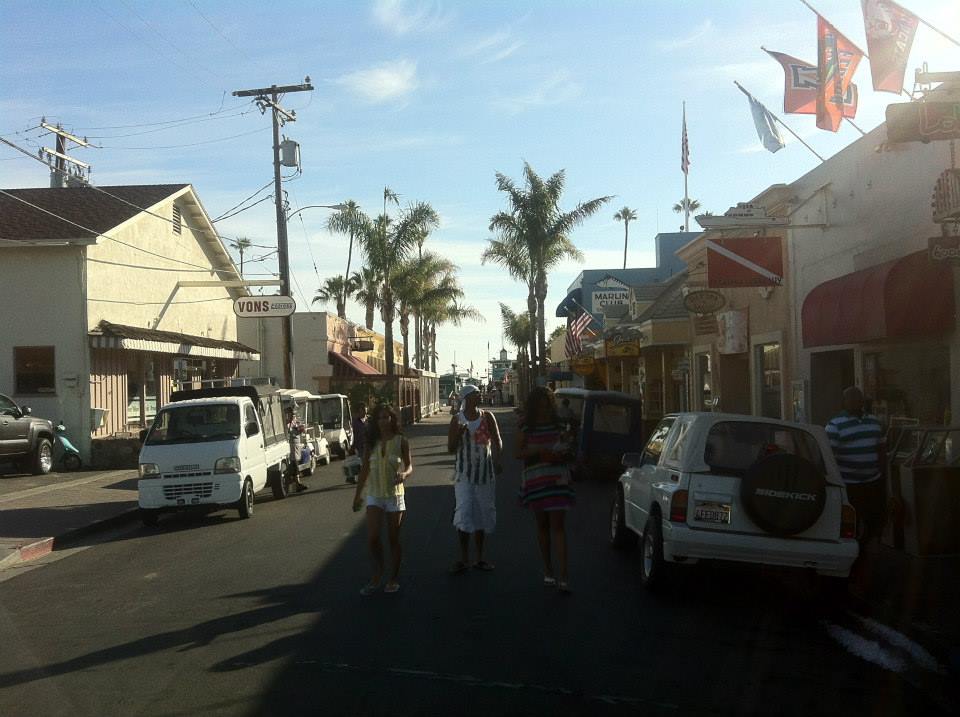


12 thoughts on “California Fool’s Gold — Exploring Santa Catalina Island and Avalon”